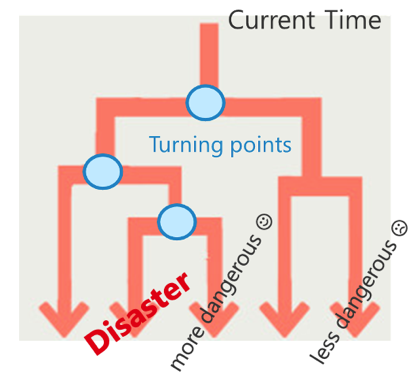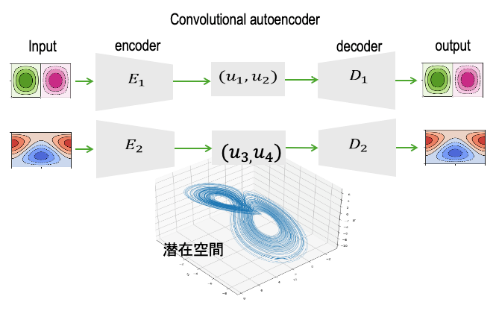Progress Report
Artificial generation of upstream maritime heavy rains to govern intense-rain-induced disasters over land (AMAGOI)[3] Dimension Reduction
Progress until FY2024
1. Outline of the project
The goal of this research project is to prevent heavy rainfall damage on land by generating torrential rain over the sea. To achieve this, we aim to redirect weather scenarios from those leading to intense rainfall on land to ones where offshore rainstorms reduce atmospheric water vapor and mitigate disaster risks. However, comprehensive meteorological data—such as temperature, humidity, and wind direction at each location—are extremely high-dimensional, making prediction and control challenging. If future developments of similar meteorological fields can be grouped into a few typical patterns—one of which results in undesirable outcomes—then describing these abstracted scenarios could improve control efficiency. In Research Item 3, we aim to extract a small number of essential degrees of freedom that govern such branching (Fig.1). We refer to this as a latent space representation. To obtain latent space representations potentially useful for weather control, we are exploring three approaches: reservoir computing, Koopman mode decomposition, and landscape analysis.

2. Outcome so far
In the reservoir computing approach, we developed a method to reduce meteorological data dimensionality using deep learning and predict its evolution via reservoir computing. For example, we compressed time-series data (like video frames) to extract key features, then learned and predicted their dynamics (Fig.2). We also devised a control strategy focusing on the direction of greatest variation in meteorological states for more efficient guidance.


In the Koopman mode decomposition approach, we developed dimensionality reduction techniques to express meteorological data using a few dominant modes. We used singular value decomposition (SVD) and sparsity-promoting techniques, allowing tunable trade-offs between reproducibility and efficiency. We also constructed a theoretical foundation—using mathematical proofs—to validate the soundness of the dimensionality reduction and demonstrated its applicability to weather prediction. These methods are now being applied to meteorological simulation data (Fig. 3).
In the landscape analysis approach, we developed a method to identify the separatrix that governs branching multiple weather scenearios, by converting meteorological data into graph structures. Using orthogonal potential analysis and factor analysis, we identified the causes of bifurcation and demonstrated the method’s potential for weather control. We applied landscape analysis to ensemble forecast data from four typhoons (Typhoon Lionrock 2016, Typhoon Dolphin 2020, Typhoon Nepartak 2021, and Typhoon Meari 2022) (Fig.4).

3. Future plans
Next year, we will use insights from this year’s work to more concretely formulate methods for acquiring latent space representations of meteorological phenomena. We will also apply these methods to more complex datasets, including real meteorological data, to verify their effectiveness.